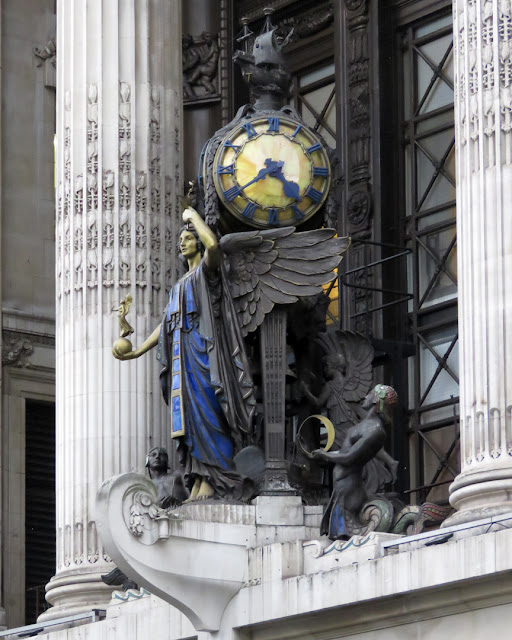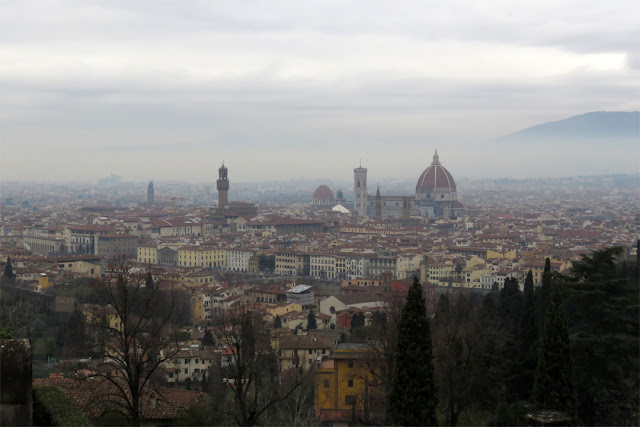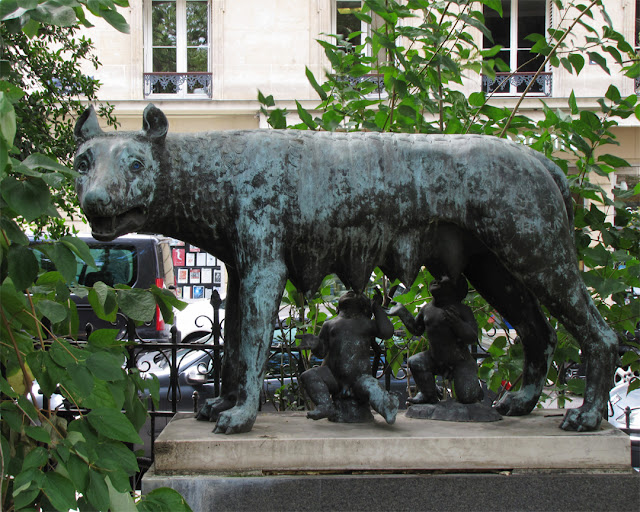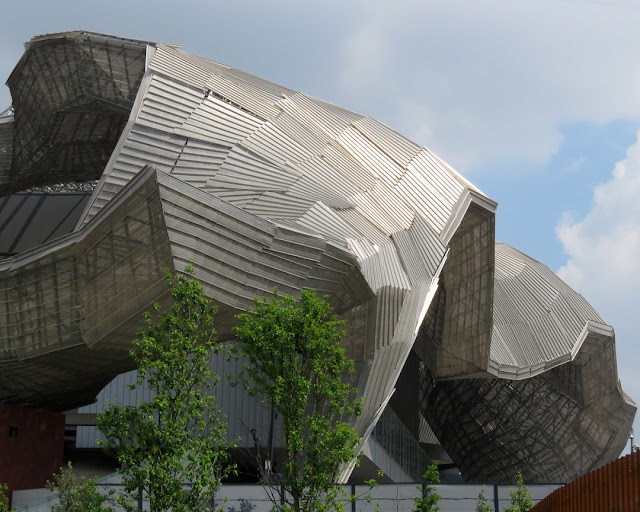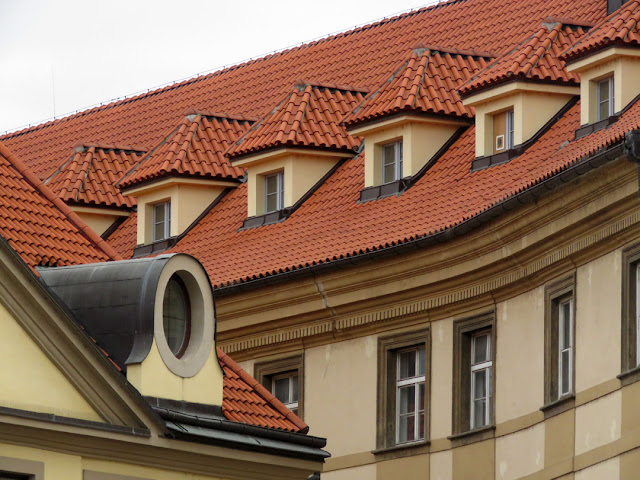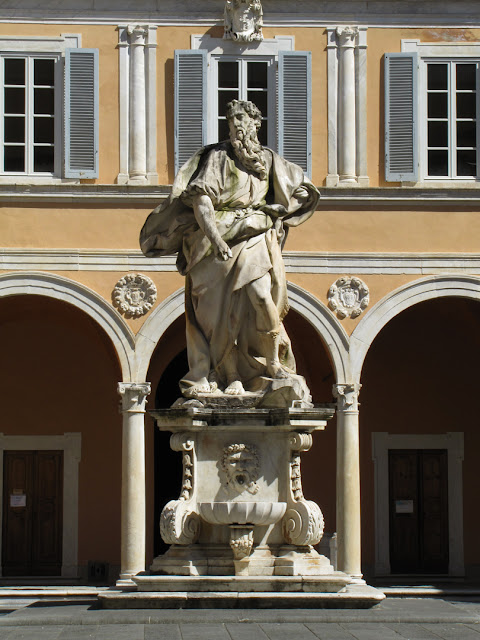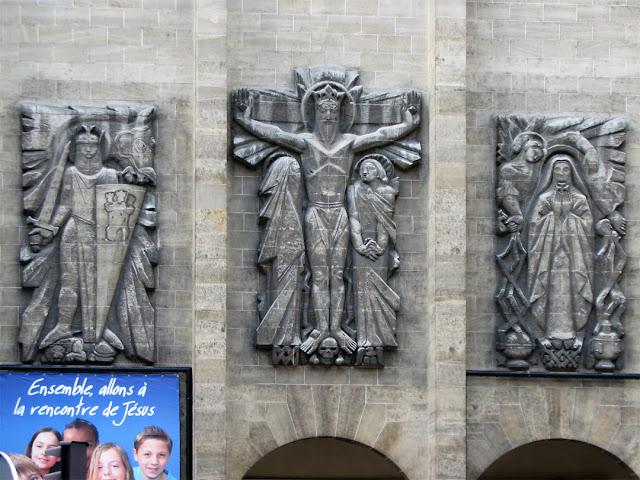Saturday, June 30, 2018
Michalská brána
Michalská brána (Michael's Gate)
Michalská
Staré Mesto (Old Town)
Bratislava, September 2017
“In Bratislava, Slovakia, Michael's Gate (Slovak: Michalská brána, German: Michaelertor, Hungarian: Mihály kapu) is the only city gate that has been preserved of the medieval fortifications and ranks among the oldest town buildings. Built about the year 1300, its present shape is the result of baroque reconstructions in 1758, when the statue of St. Michael and the Dragon was placed on its top. The tower houses the Exhibition of Weapons of Bratislava City Museum. In the medieval times the town was surrounded by fortified walls, and entry and exit was only possible through one of the four heavily fortified gates. On the east side of the town, it was the Laurinc Gate, named after Saint Lawrence, in the south it was the Fishermen's Gate (Rybná brána, Fischertor, Halász kapu). This was the smallest gate of the four, used mainly by the fishermen entering the city with fish caught in the river Danube. On the west side it was the Vydrica Gate (Vydrická brána, Weidritzer Tor, Vödric kapu), also called the Dark Gate or Black Gate, since it was like a tunnel—dark and long. In the north, there was St. Michael's Gate named after St. Michael and the St. Michael church that stood in front of it (outside the town wall). Later on it was put down and materials gained from it were used in the building of additional town walls.” (Michael's Gate, Wikipedia)
Friday, June 29, 2018
The Queen of Time
The Queen of Time by Gilbert Bayes
Selfridges
Oxford Street
London, September 2016
“In the days before mobile phones it was common practice to arrange a rendezvous beneath some well-known clock and in October 1931 Selfridges unveiled what one writer called ‘London’s newest meeting place’. Other commentators hailed it as ‘one of the sights of London’ and a ‘horological masterpiece’. Nowadays most Oxford Street shoppers barely notice it. Several reputable websites claim the clock was created as early as 1908 but even the first (the eastern) part of the building wasn’t completed until 1909 and at that time Harry Gordon Selfridge envisaged an entirely different central feature, with a large dome crowning the storefront. The western and (ultimately domeless) central sections both had to wait until after the First World War, opening in 1920 and 1926 respectively, by which time the architect Albert D Millar had conceived the idea of a clock and sculpture grouping. The statue of the Queen of Time standing on the prow of the Ship of Commerce and attended by nymphs was the work of Gilbert Bayes, a leading exponent of the New Sculpture movement, which influenced Alfred Gilbert’s statue of Eros in Piccadilly Circus. Bayes at first planned to create his 11-foot-tall queen in terracotta but he eventually chose to use bronze, decorated with gilding, blue faience and Doulton stoneware.” (The Queen of Time, Hidden London)
Thursday, June 28, 2018
Wednesday, June 27, 2018
Tuesday, June 26, 2018
Louve capitoline
Louve capitoline (Capitoline Wolf)
Square Paul-Painlevé
Place Paul-Painlevé
Quartier de la Sorbonne, 5th arrondissement
Paris, July 2011
Monday, June 25, 2018
MiCo Milan Convention Centre
MiCo Milan Convention Centre by Mario Bellini, 2008
Piazzale Carlo Magno
Milano, May 2018
“Featuring two plenary rooms, one with seating for 4,000 and the other for 2,000 and an Auditorium that seats 1,500, it is the ideal venue for large-scale performances and for international conferences requiring a large number of rooms. In the same way, the exhibition halls offer 54,000 square metres of exhibition space and can also be set up as extra plenary rooms accommodating more than 5,000 people. The conference rooms feature the full range of technologies. A parking lot for more than 1,100 cars and an heliport are included.” (CityLife, Wikipedia)
Sunday, June 24, 2018
Saturday, June 23, 2018
Friday, June 22, 2018
Ulisse Dini
Statue of Ulisse Dini by Leonardo Bistolfi, 1927
Via Ulisse Dini
Pisa, January 2013
“Ulisse Dini (14 November 1845 – 28 October 1918) was an Italian mathematician and politician, born in Pisa. He is known for his contribution to real analysis, partly collected in his book ‘Fondamenti per la teorica delle funzioni di variabili reali’. Dini attended the Scuola Normale Superiore in order to become a teacher. One of his professors was Enrico Betti. In 1865, a scholarship enabled him to visit Paris, where he studied under Charles Hermite as well as Joseph Bertrand, and published several papers. In 1866, he was appointed to the University of Pisa, where he taught algebra and geodesy. In 1871, he succeeded Betti as professor for analysis and geometry. From 1888 until 1890, Dini was rettore of the Pisa University, and of the Scuola Normale Superiore from 1908 until his death in 1918. He was also active as a politician: in 1871 he was voted into the Pisa city council, and in 1880, he became a member of the Italian parliament.” (Ulisse Dini, Wikipedia)
Thursday, June 21, 2018
Der Angler
“Der Angler” (The Angler) by Gerhard Thieme, 1987
(The fishing rod was stolen)
Rathausstraße, Nikolaiviertel
Berlin, September 2011
Wednesday, June 20, 2018
Castle Tomb
Tomb of Rudolf Lehmann
Division 94, avenue circulaire, line 1
Cimetière du Père-Lachaise, (Père Lachaise Cemetery)
Quartier du Père-Lachaise, 20th arrondissement
Paris, July 2014
Tuesday, June 19, 2018
Parco Industria Alfa Romeo Portello
Parco Industria Alfa Romeo Portello
Viale Renato Serra
Milano, May 2018
“The park is part of a new residential district which has been built on the former site of ALFA Romeo, a famous Italian car producer. The park takes form from a series of circular lines that together define three ‘green sculptures’ as well as the entire park. The three hills refer to Prehistory, History, and Present time and have different heights and characteristics. Prehistory, which hosts a lake, and History both have an ‘S’ trend while Present (or Helix) is conical and has a double spiral path with a sculpture representing DNA on top of it. By walking up each one of them visitors discover different views of the surrounding landscape, among which are the Alps. Paved areas with gravel, big lawns, bushes, and blossomings to mark the 4 seasons, an eclosed garden, a lake which becomes a skating rink during winter time and a never-ending bench around it are the main elements of the park.” (6 Reasons Why You’d Want to Visit Parco Portello in Milan, Land8 Media)
Monday, June 18, 2018
The Roofs of the Clementinum
The roofs of the Clementinum
Seen from Mariánské náměstí (Virgin Mary Square)
Staré Město (Old Town)
Prague, September 2017
Sunday, June 17, 2018
MI6 Building
Secret Intelligence Service Building by Terry Farrell and Partners
Albert Embankment
Vauxhall, Lambeth
London, September 2016
“The SIS Building or MI6 Building at Vauxhall Cross houses the headquarters of the Secret Intelligence Service (SIS, MI6), the United Kingdom's foreign intelligence agency. It is located at 85 Albert Embankment in Vauxhall, a south western part of central London, on the bank of the River Thames beside Vauxhall Bridge. The building has been the headquarters of the SIS since 1994.” (SIS Building, Wikipedia)
Saturday, June 16, 2018
Quick Dining
Cooks and waiters dining
Mercato Centrale (Central Market)
or Mercato di San Lorenzo
Piazza del Mercato Centrale
Florence, April 2014
“At the Mercato Centrale, in the San Lorenzo area, you'll find a diverse selection of shops offering visitors quality food from all over Italy, most of which are managed by the 3rd or 4th generation owners. Here, hospitality is a defining characteristic and shoppers can taste exhibited products. From April 23, the first floor of Florence's Central Market is open again. The market's renewed space of 3000 mq now offers 500 seatings and hosts 12 workshops, a restaurant, a pizzeria, a brewery, the Chianti Classico shop, a bookshop and a cooking school. Among the first floor new workshops you'll find cheese, bread, gelato, chocolate, pasta and cold cuts shops exhibiting the best food products from Italy.” (Around Florence: 5 food markets, Turismo in Toscana)
Friday, June 15, 2018
Ganymédova fontána
Detail of the Ganymédova fontána (Ganymede's Fountain) by Viktor Oskar Tilgner, 1888
Hviezdoslavovo námestie
Staré Mesto (Old Town)
Bratislava, September 2017
Thursday, June 14, 2018
Zénobe Gramme
Zénobe Gramme by Mathurin Moreau
Musée des Arts et Métiers
Square du Général-Morin
Rue Vaucanson, Le Marais
Quartier des Arts-et-Métiers, 3rd arrondissement
Paris, July 2014
“Zénobe Théophile Gramme (4 April 1826 – 20 January 1901) was a Belgian electrical engineer. He was born at Jehay-Bodegnée on 4 April 1826, the sixth child of Mathieu-Joseph Gramme, and died at Bois-Colombes on 20 January 1901. He invented the Gramme machine, a type of direct current dynamo capable of generating smoother (less AC) and much higher voltages than the dynamos known to that point.” (Zénobe Gramme, Wikipedia)
Wednesday, June 13, 2018
Sala d'armi
Sala d'armi (Hall of Arms) by Arnaldo Pomodoro, 2000
Museo Poldi Pezzoli (Poldi Pezzoli Museum)
Via Manzoni
Milan, May 2018
“The museum was originated in the 19th century as a private collection of Gian Giacomo Poldi Pezzoli (1822–1879) and his mother, Rosa Trivulzio, of the family of the condottiero Gian Giacomo Trivulzio. Many of the rooms in the palace were redecorated starting in 1846, a commissions entrusted to Luigi Scrosati and Giuseppe Bertini. Individual rooms were often decorated and furnished to match the paintings hung on the walls. The architect Simone Cantoni (1736–1818) rebuilt the palace in its present Neoclassical style with an English-style interior garden. In 1850–1853, Poldi Pezzoli commissioned the architect Giuseppe Balzaretto to refurbish his apartment. Pezzoli in his testament left the house and contents to the Brera Academy. Giuseppe Bertini, director of the Academy, opened the museum on 25 April 1881. During World War II, the palace suffered grave damage, but the artworks had been placed in safe storage. The museum was reopened in 1951 after reconstruction. The museum is notable for its broad collection of Northern Italian and Netherlandish/Flemish artists. The exhibition includes weaponry, glassworks, ceramics, jewelry, and furnishings.” (Museo Poldi Pezzoli, Wikipedia)
Tuesday, June 12, 2018
Monday, June 11, 2018
Sunday, June 10, 2018
Saturday, June 9, 2018
Friday, June 8, 2018
Ensemble, allons...
Bas-relefs by Georges Muget
Saint Ferdinand des Ternes
Rue d'Armaillé
Quartier des Ternes, 17th arrondissement
Paris, July 2009
Thursday, June 7, 2018
Basilica of Sant'Ambrogio
Basilica of Sant'Ambrogio
Piazza Sant'Ambrogio
Milan, May 2018
“The church is mostly built in brickwork of different origins and colors, with parts of stone and white plastering. The current Romanesque church was begun around 1080. The nave dates to about 1128 and the rib vaults of the nave are from about 1140. The original edifice, like the great churches of Rome of the same epoch, belonged to the basilica type; it consisted of a central nave lighted from the clerestory, two side aisles, an apse, and an atrium. Investigations made in 1864 have established the fact that the nave and the aisles of the existing basilica correspond with those of the primitive church; the atrium, however, which dates from the 9th century, and two smaller apses, flanking a new central apse of greater depth than the original, were erected. The altar occupies about the same place as in the time of St. Ambrose, and the columns of the ciborium over the altar appear never to have been disturbed; they still rest on the original pavement.” (Basilica of Sant'Ambrogio, Wikipedia)
Wednesday, June 6, 2018
W Barcelona
W Barcelona by Ricardo Bofill, 2009
Plaça de la Rosa dels Vents
Final, Passeig de Joan de Borbó
Barcelona, March 2017
“The W Barcelona Hotel, popularly known as the Hotel Vela (Sail Hotel) due to its shape, is a building designed by Ricardo Bofill is located in the Barceloneta district of Barcelona, in the expansion of the Port of Barcelona. The hotel is managed by Starwood Hotels and Resorts hotel chain and marketed under the brand W Hotels. The building, designed by the architect Ricardo Bofill, stands in 7 hectares of land reclaimed from the sea surface in the construction of the new entrance to the harbour. It is also known to resemble the Burj Al Arab of Dubai, United Arab Emirates. The five-star hotel comprises 473 rooms, 67 suites, 400 employees, a bar located on the rooftop, a spa and fitness centre, indoor and outdoor pools, terraces, beaches, restaurants, rooms dance, and other facilities grouped under a platform of terraces. The hotel provides also a restaurant lead by the Michelin-starred chef, Carles Abellán.” (W Barcelona, Wikipedia)
Tuesday, June 5, 2018
Monday, June 4, 2018
Sunday, June 3, 2018
The New Orangery
The new Orangery by Eva Jiřičná, 1998
Královská zahrada (Royal Garden)
Pražský hrad (Prague Castle)
Hradčany (Castle District)
Prague, September 2017
“The new 100 m long glass Orangery maintains the historic function of the 15thcentury site whilst creating an enclosure built to the architectural specifications of the 20thcentury. The construction is designed as a shell formed by a semi circular diagonal stainless steel mesh glazed with toughened laminated glass. The mesh is stabilised by glass and metal cross walls and supported at the back by a triangular truss which is to transfer both the horizontal and vertical forces of the enclosure. The internal spaces are column free yet function in three individual zones for differing climatic conditions. Automated roller blinds provide shade in the summer and insulation in the winter.” (Prague Castle Orangery, AI Design)
Saturday, June 2, 2018
Maison Hardel
“Maison Hardel” boulangerie, patisserie
Rue d'Armaillé / rue des Acacias
Quartier des Ternes, 17th arrondissement
Paris, July 2014
Friday, June 1, 2018
Window Cleaners
Window Cleaners
Torre Diamante (Diamond Tower) by Kohn Pedersen Fox, 2012
Via Mike Bongiorno
Milano, May 2018
Subscribe to:
Posts (Atom)


